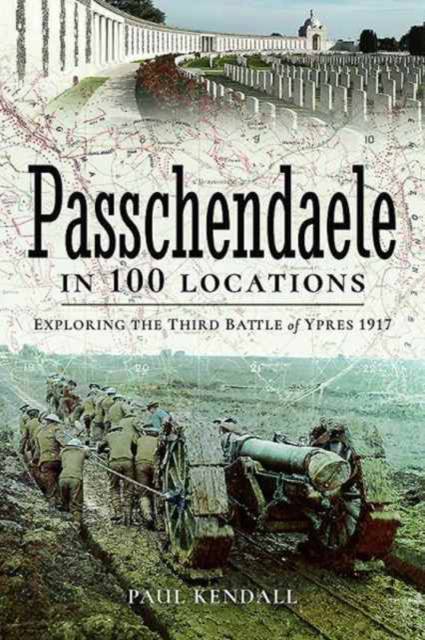
- Afhalen na 1 uur in een winkel met voorraad
- Gratis thuislevering in België vanaf € 30
- Ruim aanbod met 7 miljoen producten
- Afhalen na 1 uur in een winkel met voorraad
- Gratis thuislevering in België vanaf € 30
- Ruim aanbod met 7 miljoen producten
Zoeken
€ 34,95
+ 69 punten
Omschrijving
Encouraged by the success of an attack on Messines Ridge on 7 June 1917, Field Marshal Haig ordered that his generals should continue their preparations for the Third Battle of Ypres.
Delayed due to a number of reasons, one of which was poor weather, the offensive began on 31 July 1917. Fought around the little Belgium village of Passchendaele, the battle would come to epitomise not just the futility of offensive tactics against well-prepared defences, but of the terrible conditions the men had to endure in the Flanders mud, the images of which are forever synonymous with the trench warfare of the First World War.
Over the weeks and months that followed the fighting rumbled. The last stage of the struggle for Passchendaele took place on 6 November. In just three hours the village of Passchendaele was in the hands of the Allied troops. It had taken ninety-seven days since the opening attack on 31 July to get there. The end of the offensive came after a small action by the Canadians on 10 November to seize a section of tactically important ground.
The losses, on both sides, ran in to the hundreds of thousands. According to Lloyd George, writing in 1938, 'Passchendaele was indeed one of the greatest disasters of the war ... No soldier of any intelligence now defends this senseless campaign'.
In this highly illustrated publication, the author details 100 locations relating to the Battle of Passchendaele - from the headquarters where it was directed from through to sites of specific actions or where Victoria Crosses were won. In doing so, he links moving human stories with the very ground over which the visitor can tread today.
Delayed due to a number of reasons, one of which was poor weather, the offensive began on 31 July 1917. Fought around the little Belgium village of Passchendaele, the battle would come to epitomise not just the futility of offensive tactics against well-prepared defences, but of the terrible conditions the men had to endure in the Flanders mud, the images of which are forever synonymous with the trench warfare of the First World War.
Over the weeks and months that followed the fighting rumbled. The last stage of the struggle for Passchendaele took place on 6 November. In just three hours the village of Passchendaele was in the hands of the Allied troops. It had taken ninety-seven days since the opening attack on 31 July to get there. The end of the offensive came after a small action by the Canadians on 10 November to seize a section of tactically important ground.
The losses, on both sides, ran in to the hundreds of thousands. According to Lloyd George, writing in 1938, 'Passchendaele was indeed one of the greatest disasters of the war ... No soldier of any intelligence now defends this senseless campaign'.
In this highly illustrated publication, the author details 100 locations relating to the Battle of Passchendaele - from the headquarters where it was directed from through to sites of specific actions or where Victoria Crosses were won. In doing so, he links moving human stories with the very ground over which the visitor can tread today.
Specificaties
Betrokkenen
- Auteur(s):
- Uitgeverij:
Inhoud
- Taal:
- Engels
- Reeks:
Eigenschappen
- Productcode (EAN):
- 9781473895164
- Verschijningsdatum:
- 30/07/2026
- Uitvoering:
- Paperback
- Formaat:
- Trade paperback (VS)
- Afmetingen:
- 152 mm x 229 mm

Alleen bij Standaard Boekhandel
+ 69 punten op je klantenkaart van Standaard Boekhandel
Beoordelingen
We publiceren alleen reviews die voldoen aan de voorwaarden voor reviews. Bekijk onze voorwaarden voor reviews.








